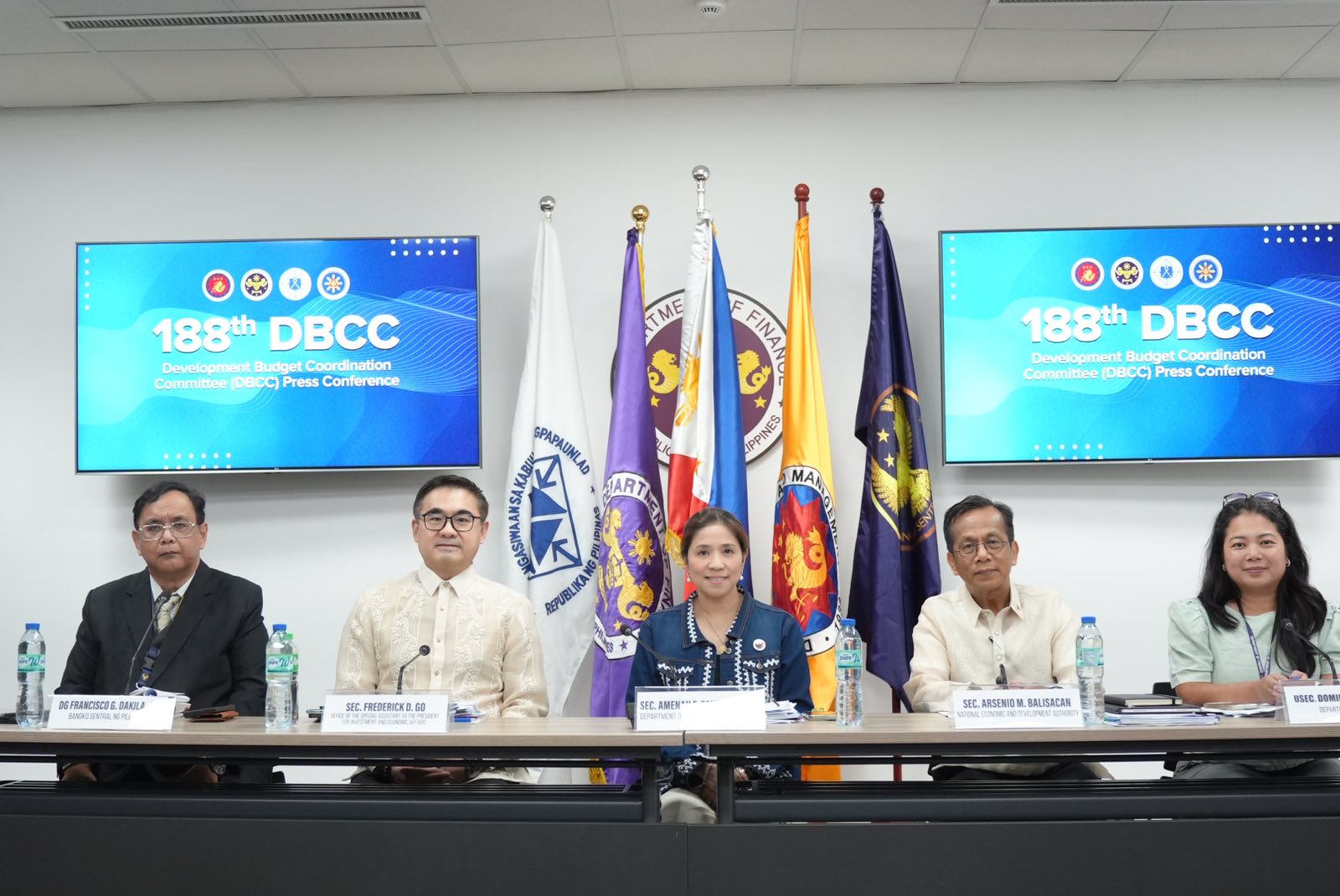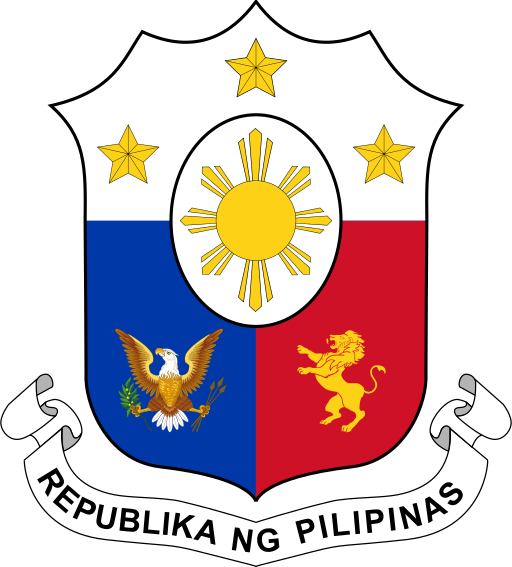Review of the Medium-Term Macroeconomic Assumptions
and Fiscal Program for Fiscal Years (FY) 2024 to 2028
June 27, 2024

In line with the Development Budget Coordination Committee’s (DBCC) proactive efforts to continuously adapt to emerging domestic and global developments, the government’s medium-term macroeconomic assumptions, growth targets, and fiscal program for Fiscal Years (FY) 2024 - 2028 have been reviewed, and further recalibrated.
Macroeconomic Assumptions
In pursuit of macroeconomic stability, the DBCC has approved the following revisions to the macroeconomic assumptions based on emerging data:
|
Indicator
|
2024
|
2025
|
2026-2028
|
|
Inflation (%)
|
3.0 - 4.0
|
2.0 - 4.0
|
2.0 - 4.0
|
|
Dubai Crude Oil (USD/bbl)
|
70 - 85
|
65 - 85
|
65 -85
|
|
Foreign Exchange Rate
(Php/USD)
|
56 - 58
|
55 - 58
|
55 - 58
|
|
Goods Exports growth, BPM6 (%)
|
5.0
|
6.0
|
6.0
|
|
Goods Imports growth, BPM6 (%)
|
2.0
|
5.0
|
8.0
|
Notes: bbl = barrel, BPM6 = Balance of Payments 6th edition, Php= Philippine peso, USD = US dollar
The country’s inflation rate reached 3.9 percent in May and is expected to settle between 3.0 to 4.0 percent by the end of this year. This is significantly lower than the average inflation in other emerging markets and developing economies at 8.3 percent and the global average of 5.9 percent, as projected by the International Monetary Fund (IMF).
We are determined to achieve price stability and return to the target range of 2.0 to 4.0 percent from 2025 to 2028 through the proactive implementation of monetary policy measures and well-targeted government interventions that address the primary drivers of inflation. This includes implementing the new Comprehensive Tariff Program for 2024-2028 to improve the affordability of essential commodities amid the rising global prices, and the Food Stamp Program to mitigate the impact of elevated food prices on the poor and vulnerable sector.
Meanwhile, as global oil prices stabilize for the rest of the year as the members and allies of the Organization of the Petroleum Exporting Countries (OPEC+) are expected to start relaxing voluntary cuts, Dubai crude oil price assumptions were slightly narrowed to USD 70 to 85 per barrel from USD 70 to 90 per barrel in 2024. The assumption of USD 65 to 85 per barrel from 2025 to 2028 was maintained as global oil production is expected to rebound over the medium term, consistent with the backwardation observed in oil futures markets.
The peso-dollar exchange rate assumption for 2024 was revised to Php 56 to Php 58 against the USD from Php 55 to Php 57. This is expected to broadly stabilize at Php 55 to Php 58 against the USD for the remainder of the medium term, given increasing tourism receipts, growing BPO revenues, and robust overseas Filipinos remittances that will support and keep the currency stable and resilient against persisting global headwinds.
In terms of growth assumptions for trade, goods exports were revised upwards to 5.0 percent from 3.0 percent in 2024, given the better-than-expected outturn in the first quarter and an improved outlook for the global semiconductor market. This will continue to grow to 6.0 percent in 2025 to 2028.
Meanwhile, growth projections for goods imports were revised downwards to 2.0 percent in 2024 and 5.0 percent in 2025 amid moderation in international commodity prices alongside the impact of tight monetary policy tempering consumption and investment activity. Nonetheless, goods imports will remain supported by sustained infrastructure investments and are expected to grow by 8.0 percent from 2026 to 2028.
Real Growth Projections
For the first quarter of the year, the Philippine economy remained a frontrunner among ASEAN-6 countries, expanding by 5.7 percent, outperforming Indonesia (5.1 percent), Malaysia (4.2 percent), Singapore (2.7 percent), and Thailand (1.5 percent). This development brings us to an astounding 6.1 percent average growth rate since the Administration took office – from the third quarter of 2022 to the first quarter of 2024.
|
Year
|
GDP Growth Assumptions
(in percent)
|
|
2024
|
6.0 - 7.0
|
|
2025
|
6.5 - 7.5
|
|
2026-2028
|
6.5 - 8.0
|
Despite external headwinds, we are expected to continue surpassing most emerging economies, finishing strong at 6.0 to 7.0 percent in 2024 and expanding further to 6.5 to 7.5 percent in 2025, roughly consistent with the average growth forecasts of multilateral organizations.
This robust growth momentum is expected to continue over the medium term, with GDP growth reaching 6.5 to 8.0 percent from 2026 to 2028 while considering anticipated domestic and external risks and the latest monetary and trade assumptions of the Bangko Sentral ng Pilipinas (BSP).
We are committed to implementing growth-enhancing strategies to mitigate these risks such as sustaining government efforts to address inflation, promoting and adopting digitalization to improve efficiency in government spending, accelerating infrastructure development, expanding skills development for our workforce, and strengthening inter-industry supply chain linkages, among others.
This growth trajectory puts us firmly on the path to becoming an upper-middle-income economy in less than two years and reducing the poverty rate to single-digit levels by 2028.
Medium-Term Fiscal Program
We also recalibrated our fiscal targets to ensure that strategic and growth-enhancing fiscal consolidation remains at the forefront of our agenda. These new targets are more realistic, practical, and adaptive to external and domestic developments.
(in billion pesos)
|
PARTICULARS
|
2024
|
2025
|
2026
|
2027
|
2028
|
|---|---|---|---|---|---|
|
Program
|
Projections
|
||||
|
Revenues
|
4,269.9
|
4,644.4
|
5,063.2
|
5,627.5
|
6,249.6
|
|
% of GDP
|
16.1%
|
16.1%
|
16.1%
|
16.5%
|
16.9%
|
|
Disbursements
|
5,754.3
|
6,182.1
|
6,540.1
|
7,027.0
|
7,621.5
|
|
% of GDP
|
21.7%
|
21.4%
|
20.8%
|
20.6%
|
20.6%
|
|
Deficit
|
(1,484.3)
|
(1,537.7)
|
(1,476.8)
|
(1,399.5)
|
(1,371.9)
|
|
% of GDP
|
-5.6%
|
-5.3%
|
-4.7%
|
-4.1%
|
-3.7%
|
Medium-Term Revenue Program
From January to May 2024, revenue collections reached Php 1.853 trillion, increasing by 16.3 percent compared to the same period last year.
On average, revenues are expected to grow by 10.3 percent every year from 2024 to 2028, reaching Php 6.250 trillion (16.9 percent of GDP) by the end of the administration.
This will be supported by enhanced tax administration reforms centered on digitalizing the Philippine tax system and improving collection efficiency.
Moreover, the Department of Finance (DOF) has recalibrated its priority revenue reforms in consideration of the present economic situation to ensure that the proposals do not result in unintended consequences that may affect inflation and growth.
In addition, we will continue to strategically tap into non-tax revenues to generate additional funds and ensure sustainable funding in the short term period.
All these efforts will enable the government to collect more revenues and support the administration’s expenditure priorities.
Medium-Term Disbursement Program
On the expenditure side, the national government’s disbursement performance reached Php 2.258 trillion for the first five months of the year, increasing by 17.7 percent compared to the same period last year.
We expect this robust spending performance to continue and further accelerate during the last semester, reaching Php 5.754 trillion (21.7 percent of GDP) by the end of 2024.
Over the medium term, disbursements are estimated to remain at an average of about 21 percent of the GDP, reaching Php 6.182 trillion (21.4 percent of GDP) in 2025 and reaching Php 7.621 trillion (20.6 percent of GDP) by 2028.
We will maintain high investments in infrastructure, which will be between 5.0 to 6.0 percent of GDP from 2024 to 2028. This is expected to create a multiplier effect on the economy, reduce the cost of doing business, support the creation of quality jobs, and ultimately transform the economy.
Aside from infrastructure development, we will also heavily invest in programs and projects that promote social and economic transformation, in line with the administration’s Philippine Development Plan (PDP) 2023-2028.
Medium-Term Deficit Path
Based on the revenue and spending outlook, we have recalibrated our deficit program to more effectively address the country’s pressing and urgent needs.
The new deficit path will decline more realistically and sustainably, from 5.6 percent of GDP in 2024 to 3.7 percent of GDP in 2028, allowing sufficient fiscal space for the government to invest in infrastructure development and other growth-enhancing programs and projects.
Meanwhile, the debt-to-GDP ratio will also decline from 60.6 percent in 2024 before settling at 56.0 percent in 2028, well within the internationally accepted threshold of 70 percent, as recommended by the IMF.
Proposed FY 2025 National Budget
The Proposed FY 2025 National Budget is set at Php 6.352 trillion. This is equivalent to 22.0 percent of GDP and is 10.1 percent higher than the FY 2024 budget of Php 5.768 trillion.
This is anchored on the theme, “Agenda for Prosperity: Fulfilling the Needs and Aspirations of the Filipino People.”
With the overarching goal of the PDP 2023 to 2028 to achieve economic and social transformation for a prosperous, inclusive, and resilient society, the proposed budget aims to develop and protect the capabilities of individuals and families; transform production sectors to generate more quality jobs and produce competitive products; and foster an enabling environment encompassing institutions, physical and natural environment.
Closing
The DBCC is committed to sustaining the high-growth trajectory of the Philippine economy and mitigating the lingering effects of inflation amid a challenging global economic environment.
Pursuing a whole-of-government and a whole-of-society approach, we will strive to implement targeted measures, structural reforms, and strategies that will create a sustainable and future-proof economy where no Filipino is left behind.
END


